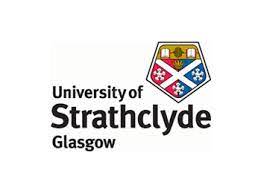University of Strathclyde: Pioneering project aims to harness ultrasonic imaging to revolutionise manufacturing processes
A £1.4 M pioneering project examining how ultrasonic imaging can be delivered remotely aims to revolutionise the quality of manufacturing processes.
The three-year project, funded by the Engineering and Physical Sciences Research Council (EPSRC) is aiming to develop a new capability for real-time, remote ultrasonic imaging that can be used for non-destructive evaluation in industry.
The research team, led by the University of Strathclyde and involving the Universities of Nottingham and Bristol, will examine how Laser Induced Phased Arrays (LIPAs), based on principles of laser ultrasonics, can be used to cut the imaging process in manufacturing from half an hour to under a second.
Adaptive arrays
The remote arrays, made of light, can be applied in extreme environments, such as in process monitoring or inspection, and will be designed to pick up potential issues to enable the process be stopped or modified if faults are detected. As well as controlling the manufacturing process itself, it could mean the material could be reworked or improved.
Project lead, Dr Theodosia Stratoudaki from Strathclyde’s Centre for Ultrasonic Engineering, said:
The long-term vision behind this project goes beyond inspection, to develop a method for monitoring and control of in-process parameters, in places of extreme environments such as fusion reactors or turbine engines.
“An array has more than one element inside, but up until now it’s had a fixed geometry – like when you are taking a medical scan, you have an instrument which you place and then take a scan.
“What we are proposing is to break that concept completely and instead of the fixed geometry of instrumentation, the array will actually build as it is scanning by taking feedback from whatever it is imaging, so it is being reconfigured according to what the image is inside.
“It saves time and data and by the end of the project we are aiming to have a system that will be able to take ultrasonic images in under a second without having any contact.”
Radioactive atmospheres
The array could be used in places with extreme temperatures or restricted access such as the inside of a turbine engine, as light can reach through confined spaces. It could also be used in space, and other places where contamination is an issue or radioactive atmospheres.
Laser work in the laboratory
Dr Stratoudaki added: “If you have a means of looking inside the material as it’s being made, then you can feed that information into the process and change it so that it makes what you want it to.
“An example is with additive manufacturing – metal 3D printing – which is making shapes. Making material that is stiffer in one place and more flexible in others isn’t possible at the moment, but if you have a means to control the whole thing as it’s being built, then the material could be tailor made and more complex structures could be made.”
EPSRC is the main funding body for engineering and physical sciences research in the UK and is part of UK Research and Innovation. The project partners also include BAE Systems, Sellafield Ltd, Hitachi and The UK Atomic Energy Authority. This project is a Targeted Research Project of the UK Research Centre in Non Destructive Evaluation.

